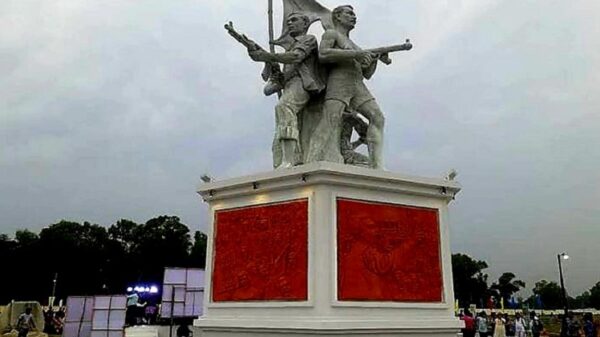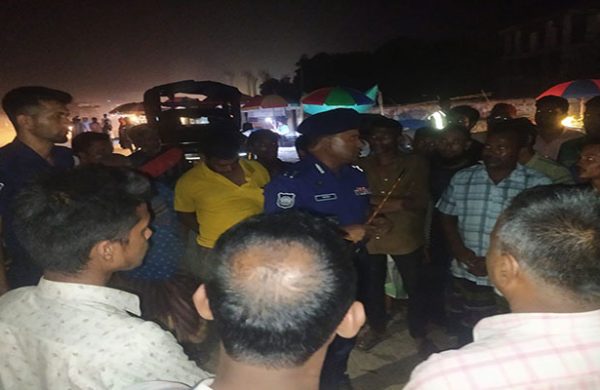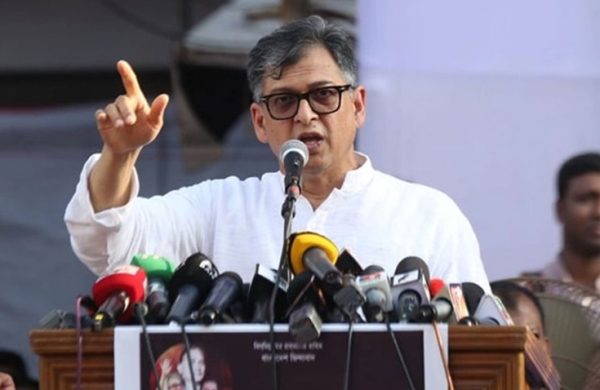Budget 2025–26: Where’s the strategy for human capital?
- Update Time : Wednesday, June 4, 2025

—Fatima Zahra—
This budget signals caution, not ambition. It does not recognize that the future of work will not resemble the past.
Bangladesh’s FY 2025–26 budget at Tk7,89,999 crore displays sound accounting. It projects a 4% fiscal deficit, sets ambitious tax revenue targets, and preserves macroeconomic stability. If we were grading for stability alone, it would get a B+.
But economic stability is not the same as economic vision.
If Bangladesh is to navigate the 21st-century labour transition, impacted by AI, climate change, and supply chain shifts, then the budget must move from spreadsheet logic to strategic foresight.
This year’s numbers show we are still treating human capital as a cost centre. We allocate Tk1,22,000 crore (9%) to debt service, but only Tk1,10,657 crore (8.2%) to education. We are spending more to pay creditors than to prepare citizens. If we believe in knowledge-based, inclusive growth, we must treat human capital as critical infrastructure.
BUDGETING FOR YESTERDAY’S LABOUR MARKET
A closer look at the Tk2,45,609 crore development budget tells us more:
- Education & Technology: Tk1,10,657 crore (45%)
- Transport & Communication: tk71,344 crore (29%)
- Health: Tk41,908 crore (17%)
- ICT Division: Tk2,144 crore
- Labour and Employment: Tk438 crore (0.03%)
Source: Budget Statement II, Ministry of Finance, 2025
Most funding still goes to conventional institutions, often decoupled from market needs. Meanwhile, future-focused areas like digital skills, green jobs, and climate resilience remain underfunded. Bangladesh spends more on debt service in 1.3 days than it allocates annually to workforce development.
To put it plainly: We are investing in buildings and bureaucracies, but not in the skills that young people actually need to succeed in this economy or the next.
AI is reshaping work. But not the budget
Artificial Intelligence is no longer hypothetical. In South Asia, the automation wave is already reshaping labour markets. McKinsey projects that up to 800 million jobs could be displaced globally by 2030, with India among the most impacted. The World Economic Forum estimates that 60% of Bangladeshi garment workers, many of them women, could lose their jobs to automation this decade.
And yet, this budget contains no visible roadmap for AI literacy or workforce reskilling. The ICT Division’s development budget is just 0.7% of development spending, smaller than the allocation for the Prime Minister’s Office. I respect the Office, but doubt its staff will be training in Python.
Without digital and analytical skills, we risk locking a generation into low-growth, precarious, low-paying roles without room to grow.
Climate change: Bangladesh’s blind spot in human capital planning
Bangladesh ranks ninth globally for climate disaster risk as one of the most climate-vulnerable countries on Earth. Under the pessimistic scenario, Bangladesh could see up to 13.3 million internal climate migrants by 2050. Yet the Ministry of Environment, Forest and Climate Change receives only Tk1,380 crore, just 0.1% of total spending.
Where is the investment in green skills? Where is the job strategy built around adaptation? Where is the integration of climate resilience into education and training?
We are preparing for floods with metaphors, not mechanisms. A country losing farmland, fisheries, and freshwater must invest in renewable energy, green construction, and climate-smart agriculture for survival.
Three lessons from development, evaluation, and statistics
If I were teaching a class on how to read a national budget like a development economist, evaluator, and statistician, I would offer three insights:
- We cannot grow what we do not fund or measure.
Long-term development depends on investing in people — education, health, and adaptive skills like AI literacy. Evaluators know that without tracking outcomes like learning or employment, we are flying blind. Statistically, we know public investment in human capability yields high returns in GDP, equity, and resilience. Yet this budget underfunds and under-measures the most future-relevant areas.
- Systems produce what they prioritize.
Budgets are algorithms. When over 52% of total spending goes to operations and only 26% to development, the system is designed to maintain the status quo. From an evaluation lens, this creates a skewed theory of change, one that assumes growth will trickle into capability, instead of building capability as a prerequisite for growth.
- Incentives, not intentions, drive outcomes.
Ministries operate on resources, not rhetoric. Climate, labour, and digital transitions remain underfunded because they are not incentivized. This is not dysfunction, it is system design. We debate education quality and youth unemployment, but spend more on debt than on preparing for the future economy. Institutions follow the money. If we want better outcomes, we need to align incentives to reward solutions, not just spending compliance.
Yet in this budget, the allocations for workforce development, digital learning, and climate resilience remain marginal both in scale and evaluability. Especially given the automation risk of 60% garment labour being replaced, there is 0% investment in AI preparedness according to the latest budget.
BUDGETS ARE NOT NEUTRAL
Every budget is a signal. It tells our youth what to expect. It tells the world what kind of economy we are building. This budget signals caution, not ambition. It does not recognize that the future of work will not resemble the past. And it certainly does not prepare the two million young people entering the workforce each year for what is ahead.
We can fix this. But only if we understand that investing in people is not a cost. It is our only path to a resilient, inclusive economy.
——————————————————————
Dr Fatima T Zahra is an Assistant Professor of Evaluation, Statistics, and Methodology and founder of Artificial Intelligence, Race, and Evaluation (AIRE) lab.



















